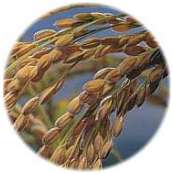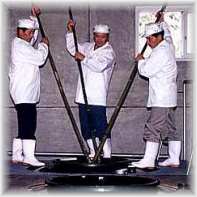|
KNOWLEDGE
Types of Sake
Making Sake
Ingredients 
Pub Guide
Sake FAQ
Sake Glossary
Sake Tasting
Serving, Storage
Vital Statistics
Free Newsletter
ARCHIVES
Newsletter Archive
Japan Times Archive
FREE NEWSLETTER
Click here to sign up |
|
 |
The Rice
There are at least nine types of special rice used to make sake. Growing sake rice is hard and backbreaking work, and inefficient as well
from a mass-production standpoint. For a description of the rice varieties used to make sake, click here.
|
|
|
|
The Water
Great sake typically comes from small brewers who use special water from nearby mountain streams or hidden underground aquifirs. But how does the
water (whether soft or hard, rich or poor in minerals) impact the taste?
Click here for an overview.
|
|
|
|
 |
The People
At the end of the day, the final sake product says as much about
the people who make it as the ingredients they use. Click here to learn about the special brewing traditions that smaller brewers continue to use, despite intense competition from mass-producers who use less labor-intensive methods and lower-quality ingredients.
|
|
|
|
The Koji
The magical koji mold is used in sake brewing to break down the starch molecules into sugar molecules that can be used as food by the yeast
cells. Click here for more about koji.
|
|
|
|
|
Photos courtesy of
Asamai Shuzo and
Rihaku Shuzo.
|
The Yeast
The type of yeast used in the brewing process significantly
impacts the flavor and fragrance of the resulting sake. Click here for more about the types of yeast used in sake production.
|
|
|
|
|
|
|
|
|